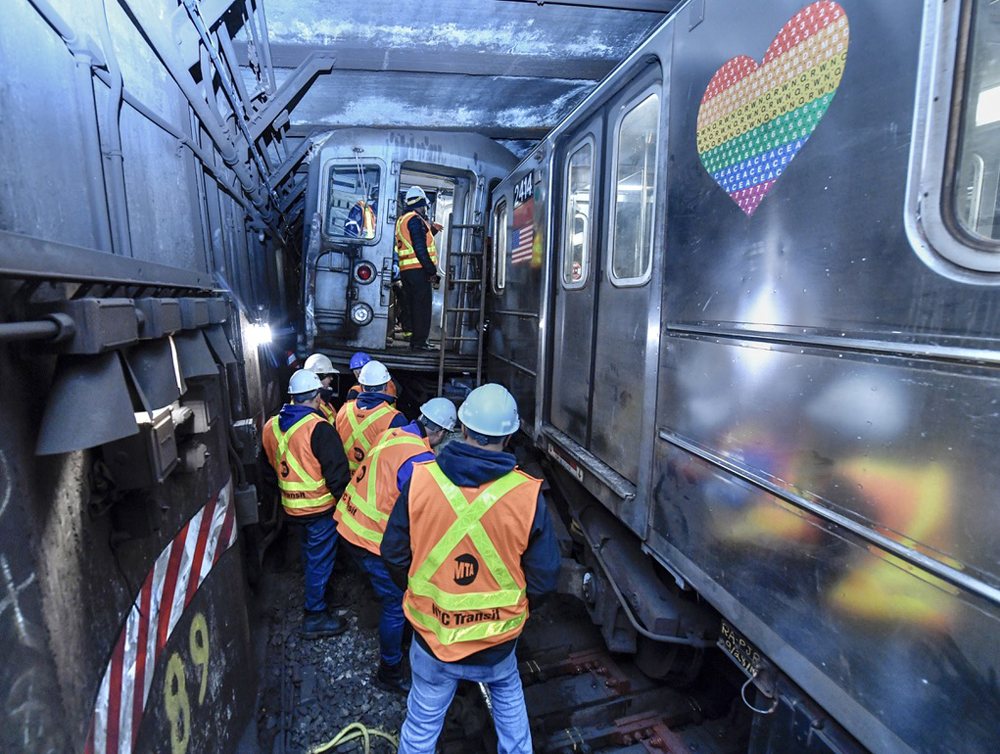
WASHINGTON — A supervisor operating an out-of-service train lost radio communication with his flagger and did not receive a message to stop, passing a red signal and colliding with another train in a Jan. 4 incident involving two trains on New York City Transit’s No. 1 subway line, according to the preliminary accident report issued today (Thursday, Jan. 25) by the National Transportation Safety Board.
The collision and subsequent derailment near the 96th Street station on Manhattan’s Upper West Side led to minor injuries for 22 passengers and three crew members [see “New York subway trains collide at low speed …,” Trains News Wire, Jan. 4, 2024]. It shut down service through the area for more than two days [see “Full New York subway service restored …,” News Wire, Jan. 7, 2024].

Train No. 1345 had been taken out of service after an unruly passenger pulled emergency brake cords on the train’s first five cars about 2:11 p.m., and the brakes could not be reset. After brakes and traction motors on those cars were cut out so it could be moved, the train was being operated from the sixth car by a supervisor, with a flagger in the lead car communicating by radio to coordinate the movements. But the flagger said in interviews with the NTSB that he had lost communication with the supervisor near the 96th Street station, so the supervisor did not receive his instruction to stop, and because of the brakes being cut out, the train did not activate the trip-stop mechanism that would normally stop the train when it passes a stop signal. As a result, the disabled train struck the fifth car of train No. 1427, which was crossing over from express track 3 to local track 4. A total of five cars derailed — two on train 1345 and three on train 1427.
Neither train was equipped with event recorders, cameras, or other recording devices.
The preliminary report sets basic details of the incident and is subject to change. The NTSB says its ongoing investigation will focus on New York City Transit’s operating procedures when moving bad-order cars; radio procedures; mechanical procedures when placing a revenue train in bad-order status; and the lack of federal requirements for railcar event recorders.














When a train or equipment movement is being operated from other than the head end with a member of the crew stationed on the head end calling car lengths to clear, the person operating the movement is supposed to stop in half the distance last called if no further transmissions are received. That’s not an exact quote from the NORAC or GCOR rule books but it’s close. I have no idea what rulebook governs train movements on NYCTA but I cannot see it being done safely any other way.
NYCT has intercoms.
I’m assuming the cars were set up as five-car sets and had to be handled on an all-or-nothing basis, which was why the five cars were cut out, there was no intercom and the supervisor was operating from the sixth car.
Is there a specfic time with no communication from the flagger before the operator is required to stop and ascertain what happened? Especialy when approaching an interlocking?